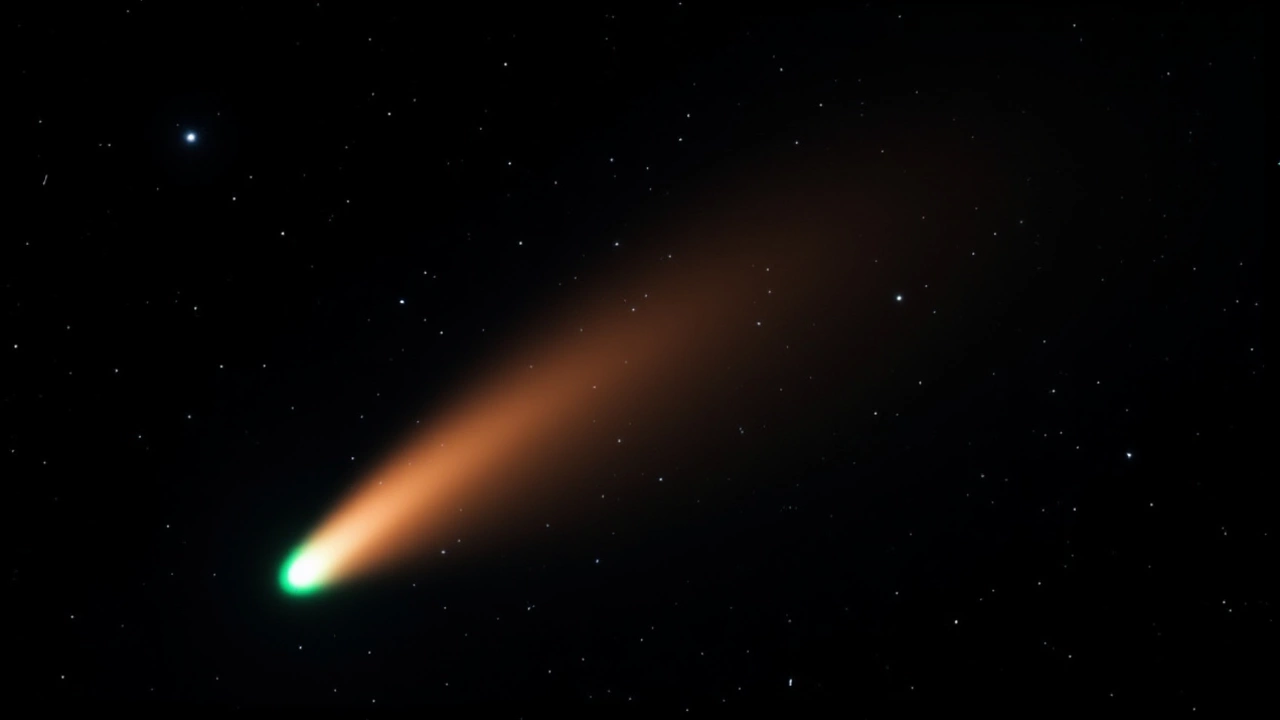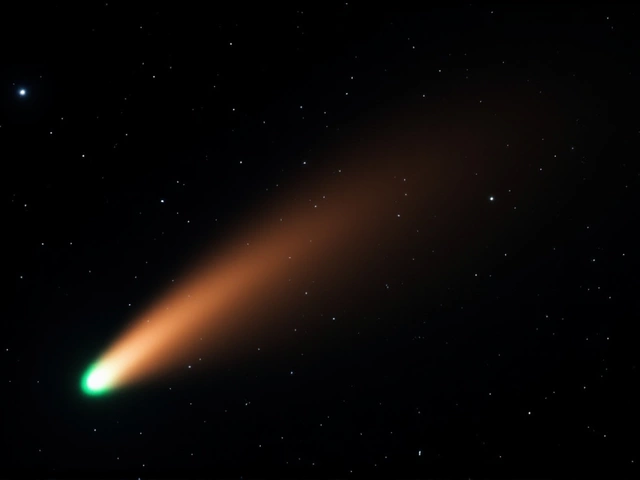
When Avi Loeb, a Harvard astronomer known for courting the extraterrestrial, posted a preprint on July 16, 2025, he set off a firestorm over the newly‑spotted interstellar visitor 3I/ATLAS. The object, first spotted at 10:42 AM UTC on July 1, 2025 by the ATLAS observatory in Chile, is now the centerpiece of a debate that feels part science, part science‑fiction.
Background: Interstellar Visitors and the Discovery of 3I/ATLAS
3I/ATLAS is only the third confirmed interstellar interloper after the wildly debated ‘Oumuamua (2017) and the comet‑like 2I/Borisov (2019). Its hyperbolic path—an eccentricity of about 6.14—means it isn’t bound to the Sun and will zip past our system at a blistering 137,000 mph (221,000 km/h). Spectroscopic data from ESA’s European Space Agency Mars Express and NASA’s Juno confirmed a 15‑mile coma of water vapor and cyanogen, the chemical fingerprints of a typical comet.
Loeb’s Alien Probe Hypothesis
In his preprint, Loeb suggested there’s a 30‑40 % chance the object isn’t a natural comet at all, but a “Trojan Horse” probe—an engineered device masquerading as ice and dust. He invoked the “Dark Forest” hypothesis, which argues that advanced civilizations might strike first to eliminate unknown threats. According to Loeb, a mothership could have released a swarm of mini‑probes that performed a reverse Oberth maneuver near perihelion, slowing enough to intercept Earth.
“If 3I/ATLAS shows any non‑gravitational acceleration near its closest approach to the Sun, we might be looking at propulsion,” Loeb wrote, pointing to the perihelion on October 29, 2025 at 11:23 AM UTC as the crucial test.
Scientific Community’s Counterarguments
Tom Statler, NASA’s lead scientist for small bodies, told The Guardian that the object ‘looks like a comet. It does comet things.’ He emphasized that while 3I/ATLAS has a few oddities, its outgassing pattern, coma size, and trajectory all match known cometary physics.
NASA’s Jet Propulsion Laboratory, represented by Dr. Kelly Fast, issued a statement on July 5, 2025 affirming that “all available data indicate 3I/ATLAS is a natural interstellar comet with no evidence of artificial origin.”
SETI Institute senior astronomer Seth Shostak published a rebuttal on July 22, 2025 titled “Occam’s Razor and Interstellar Visitors,” calling Loeb’s scenario “unfalsifiable” and warning that “if it accelerates it might be aliens, if it doesn’t accelerate it might be aliens.”
Dr. Paul Chodas of NASA’s Center for Near‑Earth Object Studies presented orbital calculations at an emergency virtual meeting of the International Astronomical Union on July 10, 2025, confirming the object will never come closer than 270 million km (168 million mi) to Earth.
Observations and the Upcoming Perihelion Test
Continuous monitoring is slated through November 2025 via the Deep Space Network. Dr. Davide Farnocchia of JPL said any deviation beyond 0.0005 AU from the predicted path would trigger an urgent investigation. So far, the trajectory is within 0.0002 AU of predictions—a solid sign of natural motion.
Computer models from Dr. Alan Jackson of the University of Toronto suggest the object could be up to three billion years older than our Sun, possibly hailing from the V1298 Tauri system about 360 light‑years away.
When the Sun’s radiation peaks at perihelion, scientists will watch for any unexpected thrust. If the comet’s speed changes beyond what outgassing can explain, the ‘alien probe’ idea would gain traction; if not, Loeb’s odds may be trimmed back to textbook probabilities.
Implications for SETI and Future Research
Even if 3I/ATLAS proves to be a textbook comet, the episode underscores a growing willingness to treat interstellar interlopers as potential techno‑signatures. The debate has already reignited interest in building rapid‑response telescopes capable of high‑resolution spectroscopy within hours of discovery.
“We need a global network that can swing into action the moment an object like this appears,” says Dr. Karen Meech of the University of Hawai‘i’s Institute for Astronomy. Her criticism of Loeb’s earlier ‘Oumuamua claims—labeling them “nonsense”—has softened into a pragmatic call for better data, not for dropping speculative ideas outright.
In short, the 3I/ATLAS saga may not rewrite any textbooks, but it does highlight the thin line between open‑mindedness and sensationalism in modern astronomy.
Key Facts
- Discovery date: 1 July 2025, ATLAS observatory, Chile.
- Speed at detection: 137,000 mph (221,000 km/h).
- Orbital eccentricity: ≈ 6.14 (hyperbolic, unbound).
- Perihelion: 29 Oct 2025, 11:23 AM UTC.
- Closest approach to Earth: 270 million km (168 million mi).
Frequently Asked Questions
What evidence would prove 3I/ATLAS is an artificial probe?
Detectable non‑gravitational acceleration that cannot be explained by outgassing, such as a sudden thrust or maneuver near perihelion, would be the strongest indicator. Spectral lines showing materials not typical of comets—like metallic alloys or engineered compounds—would also raise red flags.
How does 3I/ATLAS compare to ‘Oumuamua?
Both are interstellar and hyperbolic, but ‘Oumuamua lacked a coma, leading to more speculation about its shape and composition. 3I/ATLAS displays a classic cometary coma and measurable water vapor, anchoring it more firmly in known comet physics.
Why are scientists skeptical of Loeb’s alien‑probe hypothesis?
The hypothesis relies on a low‑probability engineering scenario without direct evidence. Established cometary behavior, precise orbital modeling, and the lack of anomalous accelerations so far all point to a natural origin, making the alien claim appear unfalsifiable.
What will happen after the perihelion passage?
The object will continue on its outbound hyperbolic trajectory, slowly fading as it moves away from the Sun. Astronomers will keep tracking it to confirm that its speed matches predictions, and data will be archived for future comparative studies of interstellar visitors.
How might this episode influence future SETI strategies?
It highlights the need for rapid, coordinated observations of unexpected objects. Funding agencies may prioritize wide‑field survey telescopes and fast‑response spectrographs, ensuring any anomalous behavior is caught in real time rather than after the fact.


Comments
Post Comment